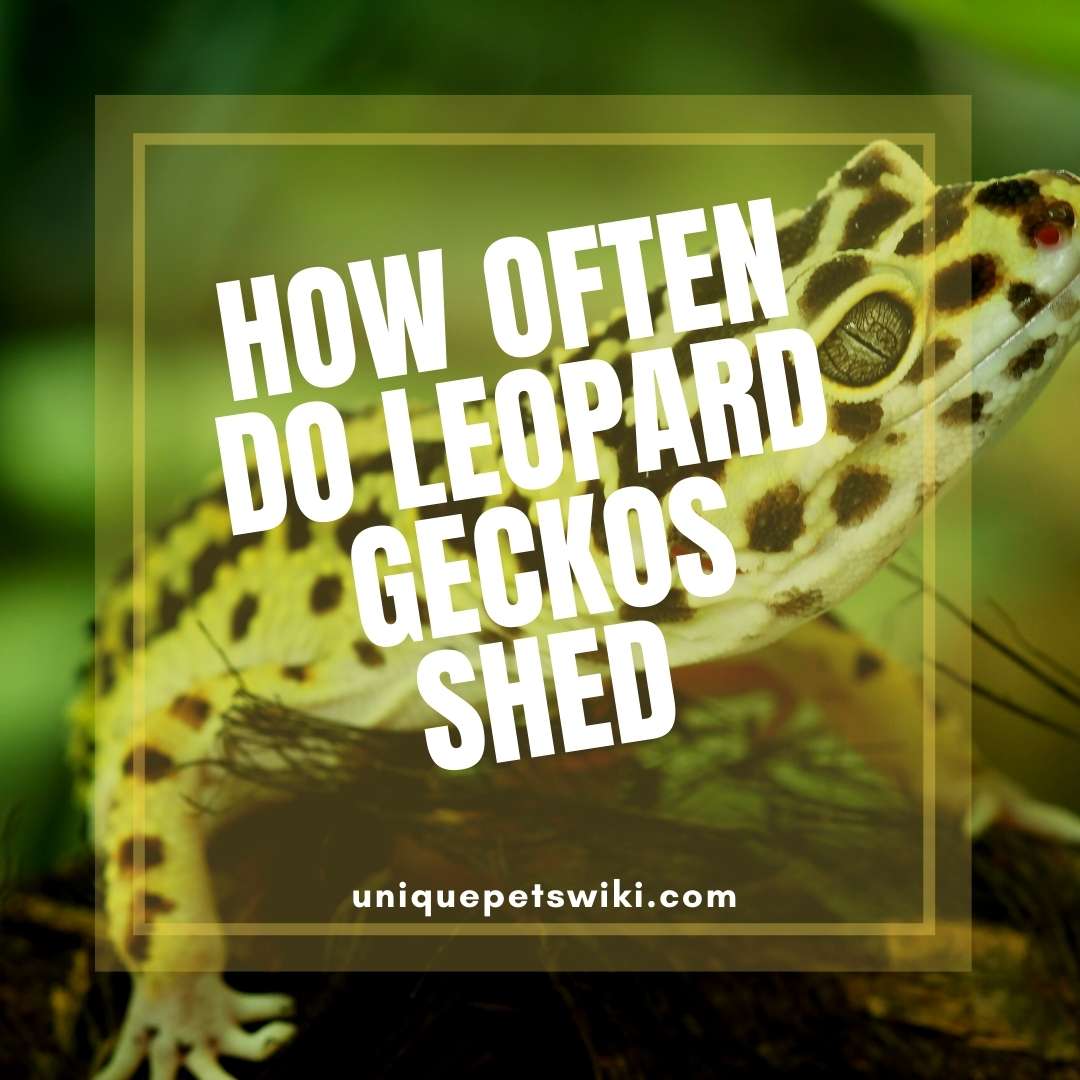All reptiles will shed their skin as they grow up. This is no exception to leopard geckos as they shed their skin regularly. Shedding is a natural process to leopard geckos, and they will not have trouble when shedding their skin.
However, shedding can be a little weird for humans to understand. Leopard geckos do shed their skin differently from snakes and other lizards. Adult leopard geckos do shed their skin once every 4-8 weeks.
In this article, you will get an insight into how leopard geckos shed their skin, how long shedding takes, how often they shed their skin and the problems associated with shedding?
Contents
How Often Do Leopard Geckos Shed?
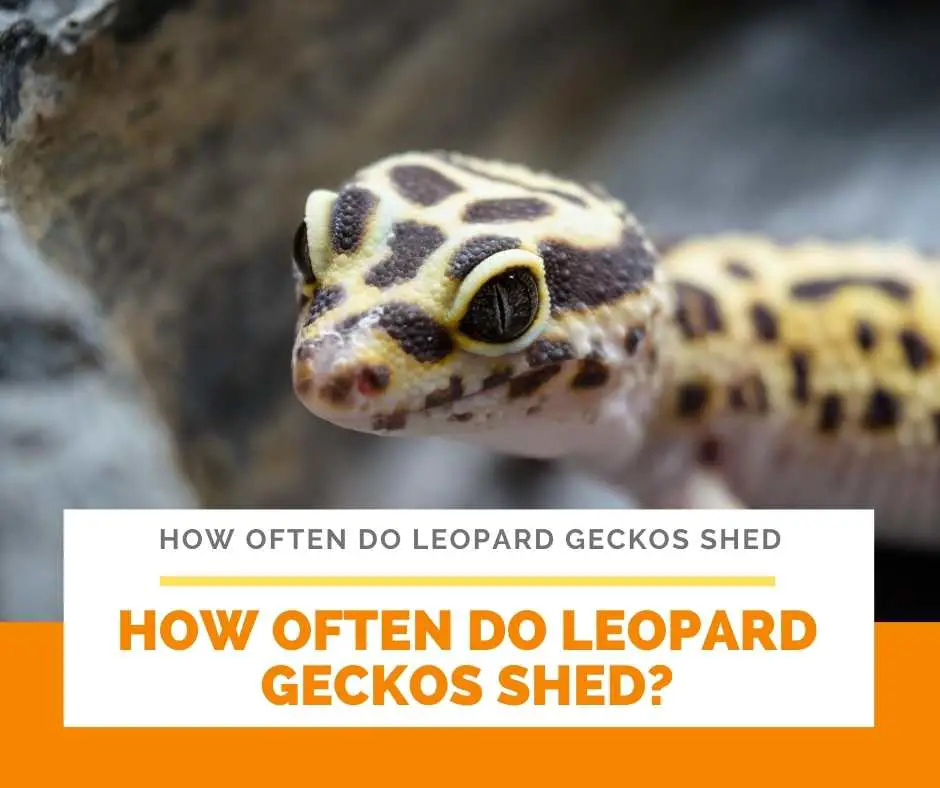
Young leopard geckos like hatchlings and juveniles do grow much faster than adult geckos. This means the shedding rate of young leopard geckos is between a week to every two weeks. The growth rate will slow down as they grow up, and adult geckos can shed between 4-8 weeks.
Shedding is a normal part of the leopard gecko’s life process. However, the exact time for shedding depends on a variety of factors. The major factor that you will need to consider is the gecko’s growth rate, the gecko’s age, and if your gecko is injured.
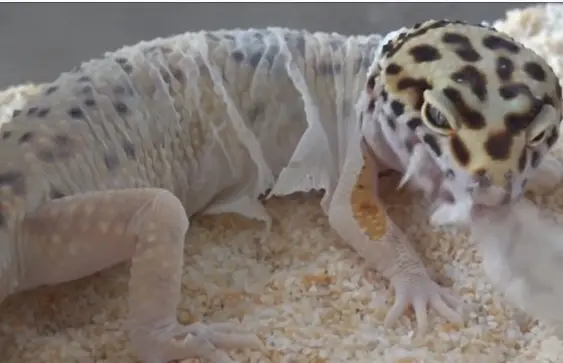
Apart from age and growth rate, injuries can have an impact on the shedding of leopard geckos. This is because the healing process can encourage shedding in the area, leading to a whole-body shed much earlier. Adult leopard geckos can also shed more often if it is eating more and getting bigger.
However, the whole shedding process is the same regardless of age. Once you notice the shedding signs, it will take leopard geckos within 24-48 hours to shed their skin.
Signs Of Shedding And What To Do When You See Them
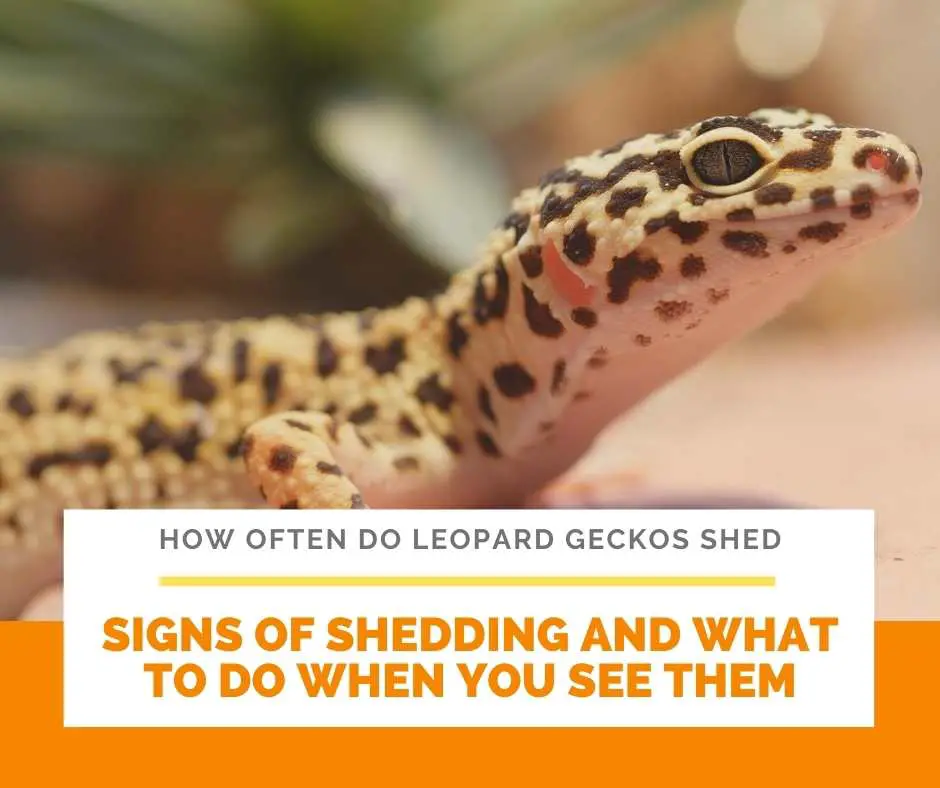
Signs of shedding in leopard geckos are usually easy to spot if you are observant. You can simply be on the lookout for lighting, graying, or paling of their skin. Your gecko may be getting ready to shed if their color changes towards the light in their enclosure.
You can easily notice the change of color if you check on your leopard gecko daily. Other signs to be on the lookout are if your gecko shows a lack of interest in food, and there is a film over their eyes. Leopard geckos focus their attention on shedding, which is why they will not be interested in eating.
Another sign is when your leopard gecko is less interested in playing with you and is not as happy as before. Some leopard owners usually describe leopard geckos nature before a shed as cranky. You can add all these signs to guess whether your gecko is shedding or not.
Shedding Process in Leopard Geckos
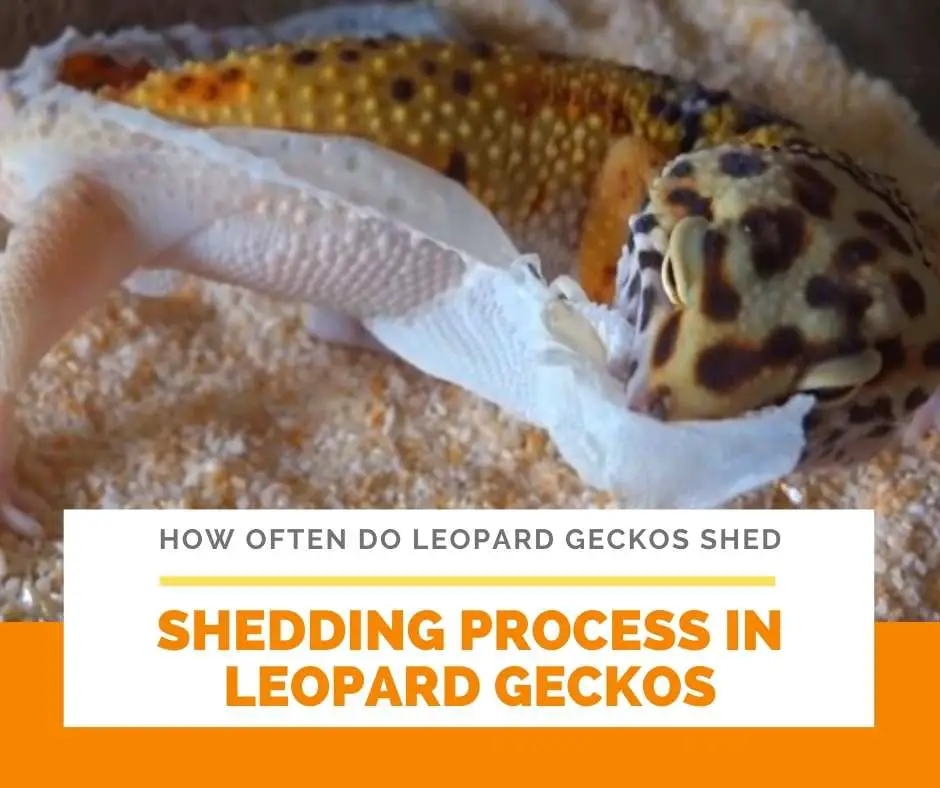
Just like reptiles, leopard geckos will shed their skin as they grow up. The shedding process in leopard geckos is stated below.
Stages of Shedding
Leopard geckos usually shed the outer layer of their skin known as epithelial skin. After leopard geckos replace the epithelial skin, they will go into a resting stage. This stage will then end as the cells that generate the new skin starts to divide from the old layer.
Once the two layers of skin start to divide, leopard geckos will become paler and duller, and can even slightly change their color. However, you do not have to worry once this happens. Once the old layer of skin is ready to shed, it will look like a papery membrane.
It will then come off in a sheet-like section that looks similar to a peeling sunburn. However, leopard geckos don’t shed in one piece like snakes usually do. Leopard geckos will pull the skin off their bodies with their mouth and then eat it.
Leopard geckos eat their shed to regain the nutrients lost during the shedding process. After shedding, leopard geckos colors and patterns will become bright again.
Why Does My Leopard Gecko Shed So Much?
There is nothing wrong if your gecko is shedding more often. This means they are actively growing and can be shedding every two weeks. However, young leopard geckos can even be shedding every week.
When it comes to shedding, leopard geckos do not have a defined schedule. It will shed as their skin becomes too tight on their body.
Leopard Geckos Shedding And Eating Problem
You may start to worry if your leopard gecko is shedding very often without eating much. Although it is normal for leopard geckos to go off food for a few days before and after shedding. This is because leopard gecko will eat their shedding skin, which makes them fill up for some time.
However, you may need to take your gecko to the vet if it is not eating after a week after shedding and is losing weight. Some of the other signs that you can be on the lookout for during this period are lethargy, blood in stools, etc.
You need to ensure that your gecko is not eating only because of shedding. Because other reasons can cause your leopard gecko to stop eating, some of the reasons are low temperatures, impaction, parasites, stress, and so on.
Shedding Complications in Leopard Geckos
Although the shedding process is a natural process and your gecko will not have a problem with it. When a leopard gecko fails to shed, their color looks very dull and pale, which shows that there is old skin on their eyelids, body, and toes.
Shedding complications will make your gecko listless, and their behaviors will change dramatically. However, if you do not address the problems immediately, it can cause health problems. Some of the health problems are eye problems, infections, loss of toes, and can even lead to death.
This is why it is best to be aware of how your gecko is shedding and the issues that you can address and fix immediately.
Causes of Shedding Problems in Leopard Geckos
Numerous factors can cause shedding problems in leopard geckos. Some of them are stated below.
- Low temperatures
- Weakness caused by injury
- Parasites
- Bacterial infections
- Lack or abundance of Vitamin A
- Low Humidity
- Metabolic bone disease, etc.
Prevention of Leopard Geckos Shedding Problems
You can prevent shedding problems in leopard geckos by following the steps below.
Provide your gecko with a proper diet with mineral and vitamin supplements to reduce health issues that can cause a leopard gecko to shed improperly.
Place a humidity hut in their enclosure to provide them with the adequate humidity needed for proper shedding.
Check your leopard geckos level of activity, weight gain, fecal matter, and weight loss. This will help to easily identify any health problems in your gecko that can cause a shedding issue.
How To Treat Leopard Gecko With Shedding Problems?
If you notice the signs of shedding problems in your gecko, there are numerous ways that you can treat the problem.
- Providing adequate temperature and humidity
- Helping your leopard gecko
- Providing Humid Hides
Providing Adequate Temperature and Humidity
Poor humidity and temperature are the major cause of shedding problems in leopard gecko. First, you may need to check the humidity and temperature of their enclosure if they normally have issues with shedding.
You can easily treat shedding issues by providing your gecko with adequate temperature and humidity. You can provide them with a basking area with 90-95 degrees Fahrenheit on the hotter side and 85-90 degrees Fahrenheit on the cooler side.
During the shedding process, ensure that the humidity level in their enclosure is around 80-90% with proper ventilation for a short period.
Helping Your Leopard Gecko
If the shedding problem persists after providing your leopard gecko with adequate temperature and humidity. You can help your gecko to remove stuck shed from their body.
You will need to dip a cotton swab or a q-tip in hydrogen peroxide and gently rub it on the affected part to remove the skin. You can also moisturize your gecko with thalmic lubricant lotion if the stuck skin is attached firmly and does not come off.
After the skin is softened, you can then gently remove the skin. However, you need to ensure that you do not force the skin off as it can lead to more damage to your gecko.
Note: If the shedding problem persists after providing your gecko with adequate temperature and humidity, it is best to immediately contact your local reptile vet.
Providing Humid Hides
Humid hides are similar to humidity huts, and you will need to provide one for your leopard gecko. Your gecko can then sit in the hides during shedding to get more moisture in their skin.
You can provide your gecko with a humidity hut with coconut husk or sphagnum moss as a substrate for proper humidity. You should also ensure that the humidity hut can absolve moisture, and the substrate provided is damp.
You can either buy a humid hide or you make one by yourself.
DIY Humid Hide
As stated above, humid hides help to prevent stuck shed. Here are the steps for making a DIY Humid Hide.
- Get a container that can fit inside your leopard gecko enclosure
- Cut a hole on the side of the container and place it upside down.
- Put slightly damp peat moss or paper towel in it
- Try to moisten the substrate every week so it will not dry out.
Conclusion
Just like other reptiles in the world, leopard geckos will shed their skin as they grow. However, leopard geckos will shed their skin all at once rather than in pieces or over time.
